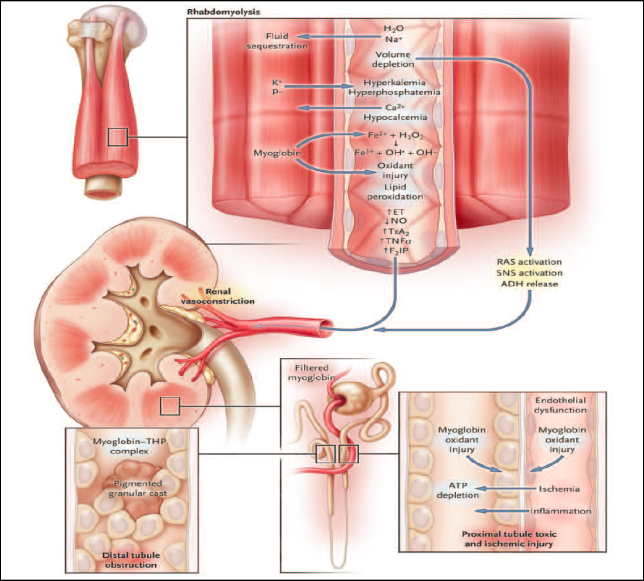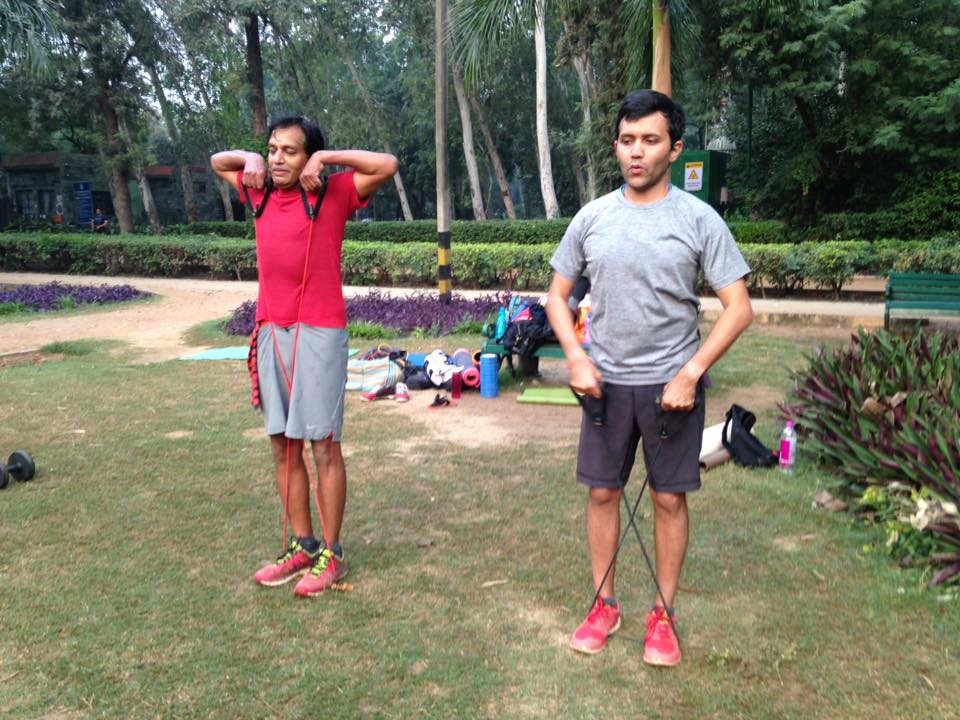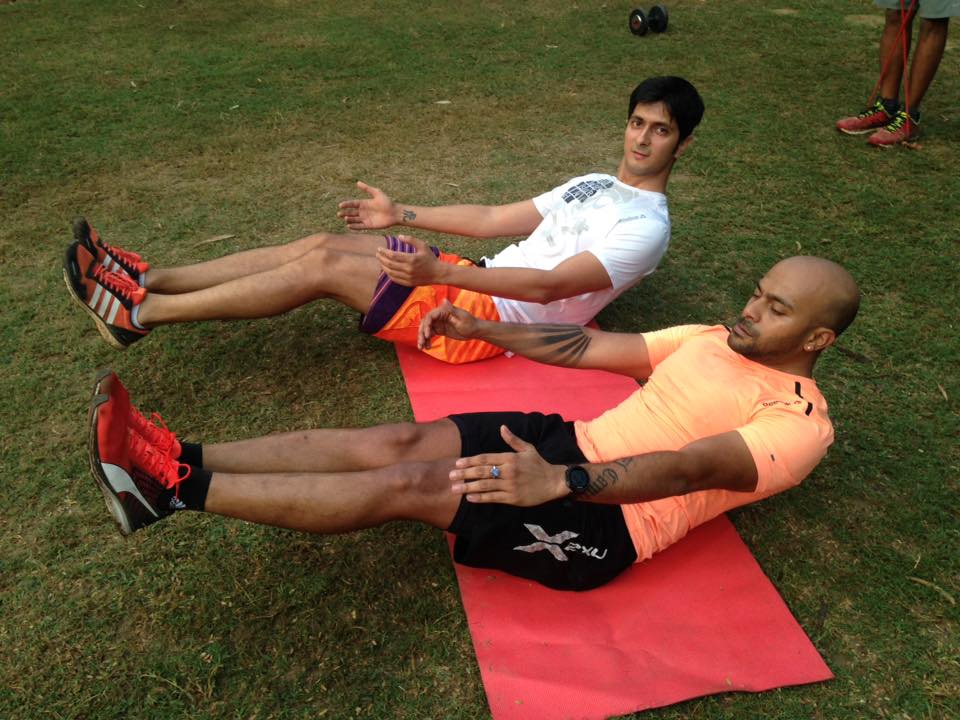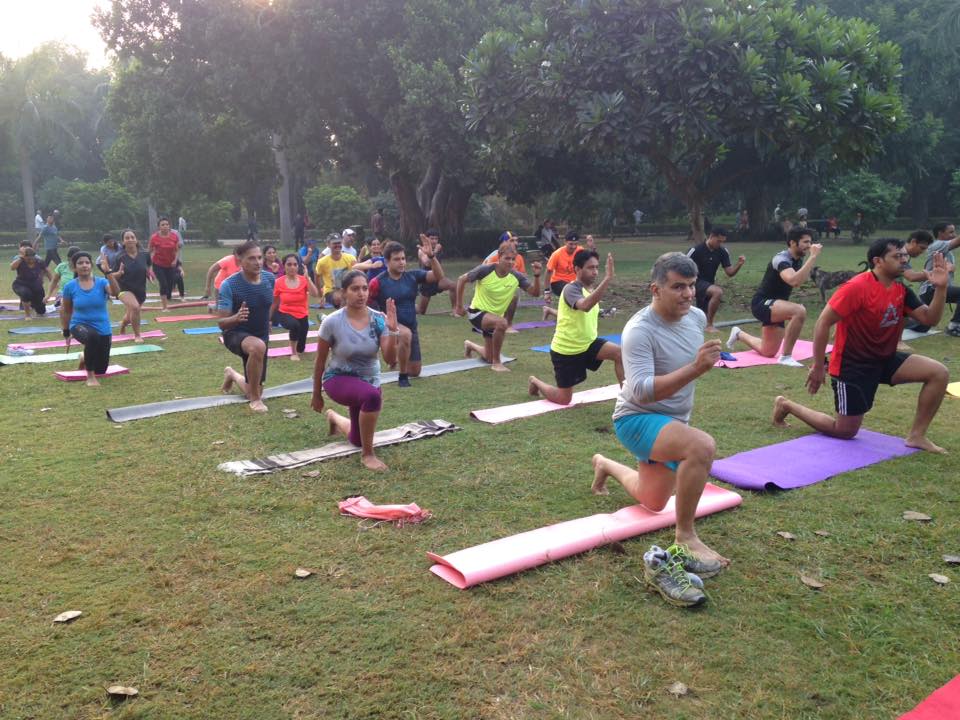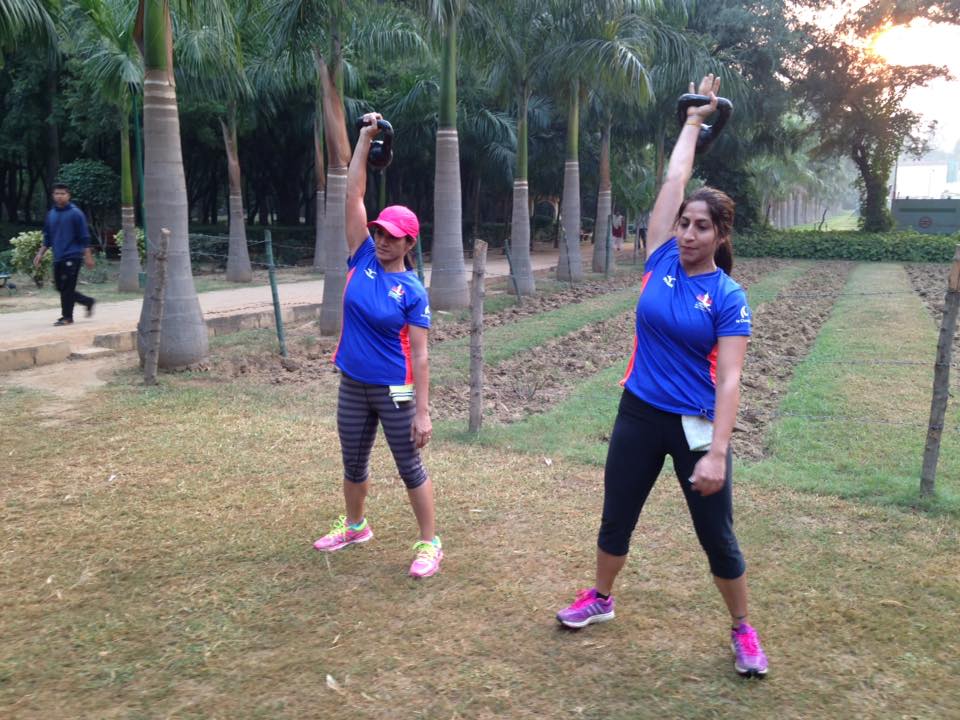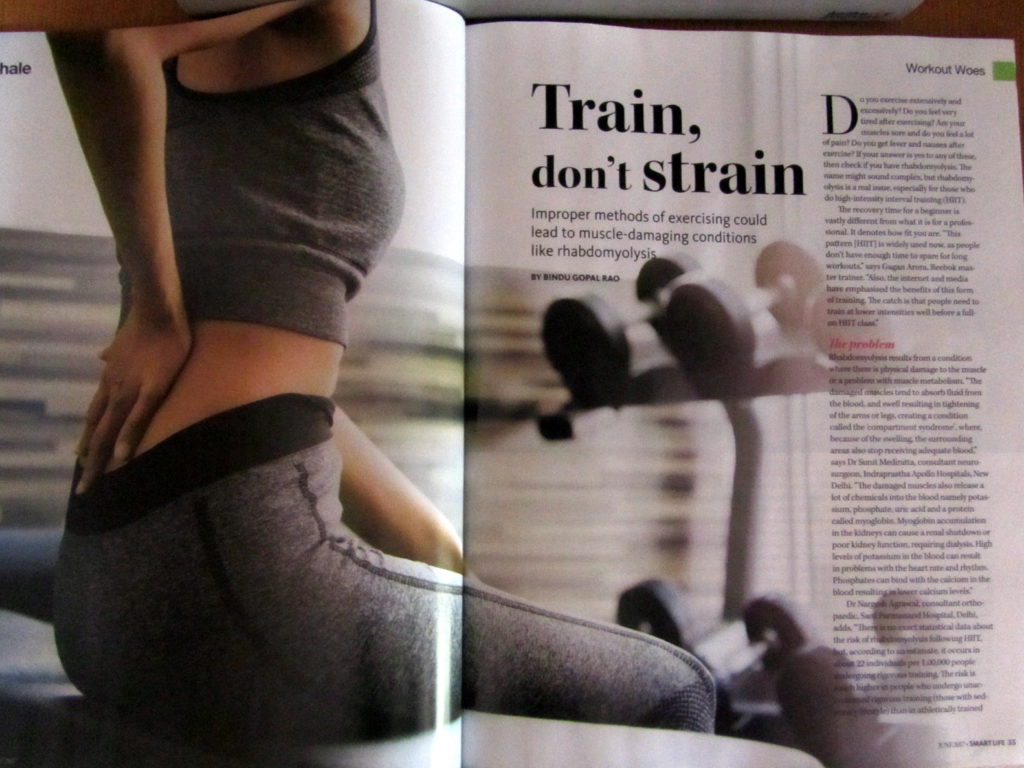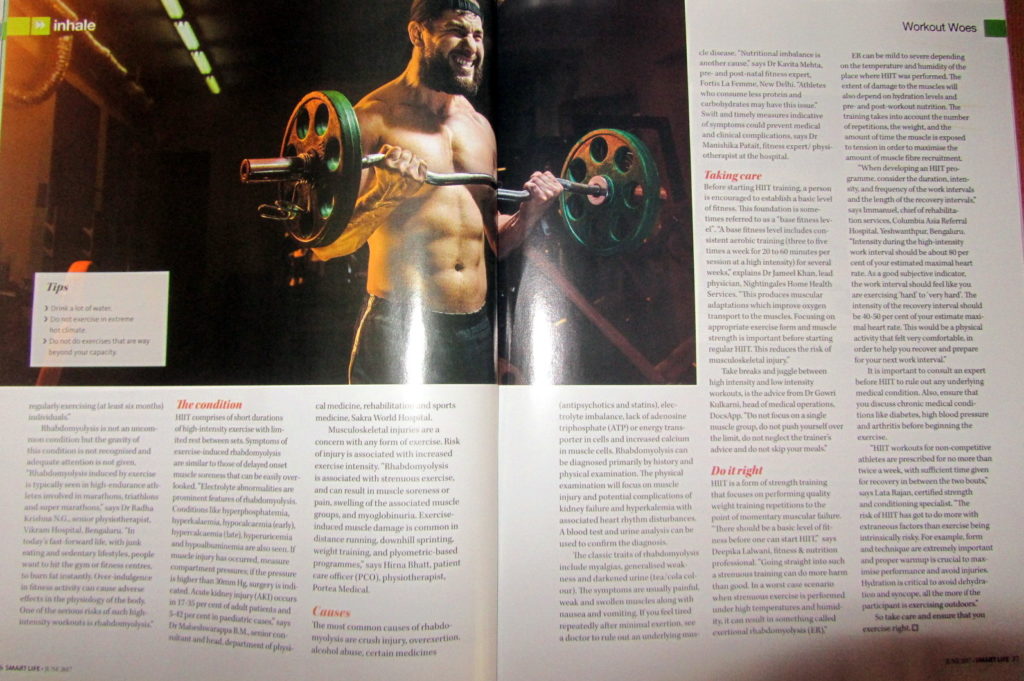Do you indulge in extensive and excessive exercises? Do you feel very tired after exercising? Are your muscles very sore and do you feel a lot of pain, fever and nausea after exercise? Well, if you answered yes to any of these, it is better to check if you have Rhabdomyolysis. The name might sound complex, but this is a real issue especially for those who do high-intensity interval training (HIIT). Time here is one of the key component which can vastly differ from a beginner to an elite. In simple words how quick you recover denotes how fit you are. Gagan Arora, Reebok master trainer says, “this pattern is vastly used now as people don’t have enough time to spare for long workouts. Also, the internet and media has thrown too much good news about this form of training. The catch is people need to train at lower intensities well to get promoted to a full on HIIT class.”
The Problem
Rhabdomyolysis results from a condition where in there is a physical damage to the muscle or problem with muscle metabolism. “The damaged muscles tend absorb fluid from the blood and swell resulting in tightening of the arms or leg creating a condition called as the “compartment syndrome” where in because of the swelling the surrounding areas also stops receiving adequate blood flow. The damaged muscles also release a lot of chemicals into the blood namely potassium, phosphate, uric acid and a protein called myoglobin. Myoglobin accumulation in the kidneys can cause a renal shutdown or a poor kidney function requiring dialysis. High levels of potassium in the blood can result in problems with the heart rate and rhythm. Phosphates can bind with the calcium in the blood resulting in lower calcium levels,” says Dr Sunit Mediratta Consultant Neurosurgeon, Apollo Hospital New Delhi. Dr. Nargesh Agrawal Consultant Orthopaedic, Sant Parmanand Hospital, Delhi adds, “there is no exact statistical data about the risk of rhabdomyolysis following HIIT but according to an estimate it occurs in about 22 individuals per 100,000 people undergoing rigorous training. The risk is much higher in people who undergo unaccustomed rigorous training (sedentary lifestyle) than in athletically trained regularly exercising (at least 6 months) individual.” The true incidence of Rhabdomyolysis is difficult to establish owing to varying clinical scenarios. The reported incidences range around 13% approximately. Rhabdomyolysis is not an uncommon condition and the gravity of this condition is not appreciated and adequate attention is not given. Dr Radha Krishna N G, Senior Physiotherapist, Vikram Hospital, Bangalore avers, “rhabdomyolysis induced by exercise is typically seen in high-endurance athletes involved in marathons, triathlons and super marathons. In today’s fast forward life eating junk and sedentary lifestyle, people want to hit the gym or fitness centre, to burn fat instantly or over indulgence in fitness activity can cause adverse effects in the physiology of the body one of the serious real risks of high intensity workouts is rhabdomyolysis.”
The Condition
HIIT comprises of short durations of high intensity exercise with limited rest between sets. Symptoms of exercise-induced rhabdomyolysis are similar to those of delayed onset muscle soreness that can be easily overlooked. “Electrolyte abnormalities are prominent features of rhabdomyolysis. Hyperphosphatemia, hyperkalaemia, hypocalcaemia (early), hypercalcemia (late) hyperuricemia and hypoalbuminemia also seen. If muscle injury has occurred, measure compartment pressures; if the pressure is higher than 30 mm Hg, surgery is indicated. Acute kidney injury (AKI) occurs in 17-35% of adult patients and in 5-42% in paediatric case series,” says Dr. Maheshwarappa B.M., Senior Consultant and Head, Department of Physical Medicine, Rehabilitation & Sports Medicine, Sakra World Hospital. Musculoskeletal injuries are a concern with any form of exercise. Risk of injury is associated with increased exercise intensity. “Rhabdomyolysis is associated with strenuous exercise, and can result with muscle soreness or pain, swelling of the associated muscle groups, and myoglobinuria. Exercise induced muscle damage is common in distance running, downhill sprinting, weight training, and plyometric based programs,” says Hirna Bhatt, PCO (Patient Care Officer), Physiotherapist, Portea Medical.
Causes
The most common causes of rhabdomyolysis are crush injury, overexertion, alcohol abuse, certain medicines (antipsychotics & statins), electrolyte imbalances, lack of Adenosine triphosphate (ATP) or energy transporter in cells and increased calcium in muscle cells. Rhabdomyolysis can be diagnosed primarily by history and physical examination. The physical examination will focus on muscle injury and potential complications of kidney failure and hyperkalemia with associated heart rhythm disturbances. A blood test and urine analysis can be used to confirm the diagnosis. The classic traits of Rhabdomyolysis include myalgias, generalized weakness and darkened urine (tea/cola colour). The symptoms are usually painful, weak and swollen muscles along with nausea and vomiting. If you feel tired repeatedly after minimal exertion, see a doctor to rule out an underlying muscle disease. Dr Kavita Mehta Pre and postnatal fitness expert and Dr. Manishika Patait, Fitness Expert / Physiotherapist, Fortis La Femme, New Delhi explain, “nutritional imbalance is another cause. Athletes consume less amount of protein and carbohydrates may potentially cause this issue. Swift and timely measures indicative of symptoms could prevent medical and clinical complications.”
Take Care
Before starting HIIT training, a person is encouraged to establish a basic level of fitness. This foundation is sometimes referred to as a “base fitness level”. Dr. Jameel Khan, Lead Physician, Nightingales Home Health Services, explains, “a base fitness level includes consistent aerobic training (3 to 5 times a week for 20 to 60 min per session at a somewhat hard intensity) for several weeks; this produces muscular adaptations which improves oxygen transport to the muscles. Focusing on appropriate exercise form and muscle strength is important before starting regular HIIT; this reduces the risk of musculoskeletal injury.” Dr. Gowri Kulkarni, Head of Medical Operations, DocsApp advices, “take breaks and juggle between high intensity and low intensity workouts. Do not focus on a single muscle group, push yourself over the limit, neglect the trainer’s advice and so not skip your meals.”
Do it Right
HIIT is a form of strength training that focuses on performing quality weight training repetitions to the point of momentary muscular failure. “There should be a basic level of fitness before one can start HIIT. Going straight into such a strenuous training can do more harm than good. In a worst case scenario when strenuous exercise is performed under high temperatures and humidity it can result in something called as Exertional Rhabdomyolysis (ER),” says Deepika Lalwani, Fitness & Nutrition Professional. ER can be mild to severe depending on the temperature and humidity of the place where HIIT was performed. The extent of damage to the muscles will also depend on hydration levels and pre as well as post workout nutrition. The training takes into account the number of repetitions, the amount of weight, and the amount of time the muscle is exposed to tension in order to maximize the amount of muscle fibre recruitment. “When developing a HIIT program, consider the duration, intensity, and frequency of the work intervals and the length of the recovery intervals. Intensity during the high intensity work interval should range 80% of your estimated maximal heart rate (very high). As a good subjective indicator, the work interval should feel like you are exercising “hard” to “very hard”. The intensity of the recovery interval should be 40-50% of your estimate maximal heart rate. This would be a physical activity that felt very comfortable, in order to help you recover and prepare for your next work interval,” advices Immanuel, Chief of Rehabilitation services, Columbia Asia Referral Hospital, Yeshwanthpur, Bangalore. It is important that you have consulted an expert, before you begin HIIT o rule out any underlying medical condition. Also, ensure that you discuss chronic medical conditions like diabetes, high blood pressure, or arthritis before beginning the exercise. Lata Rajan, Certified Strength & Conditioning Specialist says, “HIIT workouts for non-competitive athletes are prescribed for no more than twice a week, with sufficient time given for recovery in between the two bouts. As such the risk of HIIT has got to do more with extraneous factors than exercise being intrinsically risky. For example, form and technique is extremely important and proper warm up is crucial to maximise performance and avoid injuries. Hydration is critical to avoid dehydration and syncope and all the more if the participant is exercising outdoors.” So take care and ensure you exercise right and ensure you do not contract any injuries especially rhabdomyolysis.
Tips
- Drink a lot of water.
- Do not exercise in extreme hot climate.
- Do not do exercises way beyond your capacity.
This story appeared in the June 2017 issue of Smartlife magazine here:
